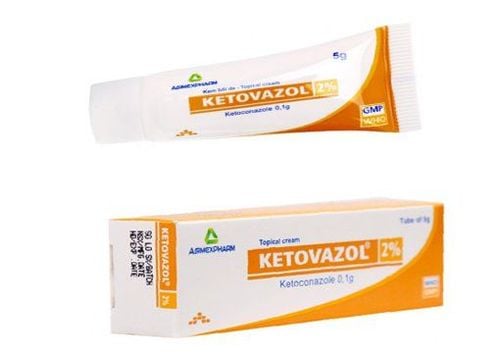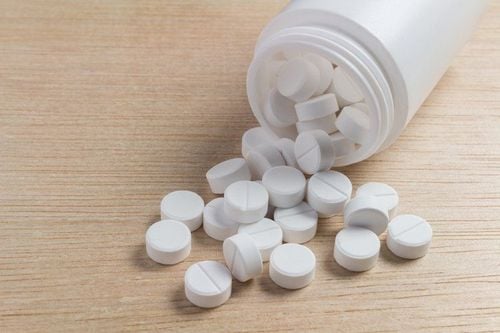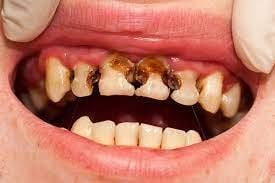This is an automatically translated article.
The article was professionally consulted by Specialist Doctor II Le Thanh Cam - Department of Pediatrics - Neonatology - Vinmec Danang International General Hospital. Uncle has 15 years of experience in diagnosis & treatment of pediatric diseases; She used to work at the Pediatric Department - Da Nang Hospital and Da Nang Center for Obstetrics and Gynecology. Her strength is diagnosis and treatment of pediatric diseases; resuscitation, pediatric emergency.
Acute gingivitis is one of the common diseases in the oral region of children. The disease is usually easy to diagnose and treat in a mild degree, but can be more severe if not treated promptly. Detecting gingivitis early will help to treat it well, prevent the risk of recurrence as well as affect the teeth, bone structure and other tissues.
1. What is acute gingivitis?
Acute gingivitis is a fairly common disease in children, this is the general term for acute gingivitis in children in the gingival part of the teeth, and other tissues of the periodontal system such as: bone socket, periodontal ligament, and root cementum are not affected.
Acute gingivitis can be localized only in the gingival papillae, gingival margin of one tooth, a group of teeth, or spread to an entire arch or two jaws.
2. Causes of acute gingivitis in children
Teething Gingivitis: This is a condition that occurs when teething in children, but only temporary. The process of teething causes food to accumulate and create bacterial plaque. In some cases, the disease can cause inflammation around the crown or abscess around the crown. The disease is common in children 6-7 years old in teeth number 6 and 7.
Primary Herpes gingivitis: Also known as blistering gingivitis, this is an acute infection caused by Herpes single virus type 1. gingivitis in children. The virus infects the respiratory tract in the form of aerosols with an incubation period of about 1 week. The disease is most common in children aged 2-5 but can also occur in older people. Children under 12 months are less likely to be infected because they receive passive immunity from their mothers.
Oral mucosal aphthous ulcer is a painful, ulcerative lesion on a mobile mucosal background that occurs in both school-age children and adults. The most common age group is 10-19 years old. May be due to local or systemic factors such as genes, immune factors, microbial infections, stress, deficiency of microelements or specific factors.
Acute oral mucositis caused by thrush:
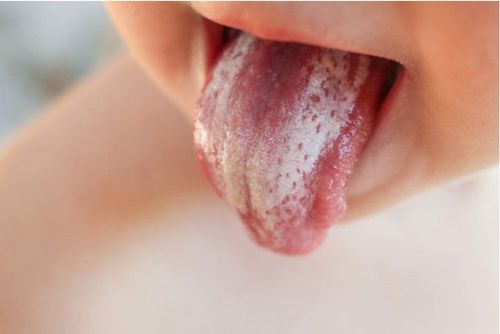
Tưa lưỡi ở trẻ
Candida fungi that normally reside in the oral cavity do not cause disease, but can multiply rapidly and cause disease when the resistance of the soft tissues in the child's mouth decreases. The disease can occur in young children after taking a topical antibiotic therapy or in infants, due to a fungal infection from the mother's genitals during the process of being born.
Acute necrotizing ulcerative gingivitis: An acute infection, often due to reduced resistance or other conditions, that alters the host-microbe relationship between humans and Borrelia vincenti. It is rare in pre-school children, sometimes occurring between the ages of 6-12 and more commonly in adolescents.
In addition, acute gingivitis is often seen in patients with poor oral hygiene, pre-existing gingivitis; malnourished children; Stress leading to increased serum corticosteroid levels is considered to be a mechanism of ANUG.
3. Signs of acute gingivitis
Signs of acute gingivitis include:
Severe gum pain, especially when eating sour, salty foods.... Small, single ulcerative lesions may appear; large ulcerative or multiple ulcerative lesions, or accompanied by ulcerative lesions elsewhere in the body; Bad breath due to the accumulation of bacteria and necrotic tissue; Red, swollen gums, bleeding gums even when just gently pressing on the gums; Appearance of a thin gray film on the gums, sores between the teeth and gums; When children have acute gingivitis due to thrush, in their mouth there will be thick white patches, emerging on the surface of the mucosa of the cheeks, gums, and roof of the mouth; headache, fever and fatigue and malaise; Swollen lymph in the neck, head, and jaw.
4. How to treat and prevent gingivitis in children
4.1. Treatment of acute gingivitis in children For mild inflammation: The patient needs to strengthen daily oral hygiene with a soft brush. Use a specific mouthwash to reduce plaque formation, use hydrogen peroxide to oxidize and clean necrotic tissue; Remove plaque and tartar: You need to take your child to the clinic for the dentist to remove tartar. After cleaning, the dentist will teach the child how to brush and floss to remove plaque; Give your child rest, a soft and nutritious diet, and adequate rehydration. 4.2. Prevention of acute gingivitis in children Oral hygiene for children under 3 years old by wrapping gauze around their index finger and then dipping in cooled boiled water to rub the child's teeth and gums. Parents should do it gently so as not to hurt the immature mucosa in children; For older children, parents should teach their children how to properly clean their teeth with a specialized toothbrush and toothpaste to avoid pathogens that cause gingivitis in children; Using a soft-bristled toothbrush can clean even between the teeth, the innermost teeth without hurting the gums. Replace toothbrush every three to four months; Use more floss to remove excess food stuck in between teeth, gargle regularly with salt water and other mouthwash solutions to kill bacteria in the oral cavity; Boost your child's vitamins and minerals by building a healthy diet. Limiting children to eat snacks and foods containing a lot of sugar because they are beneficial for the growth of bacteria that cause plaque; Periodic dental examination for children 1 year and older to prevent the development of dental diseases is best.
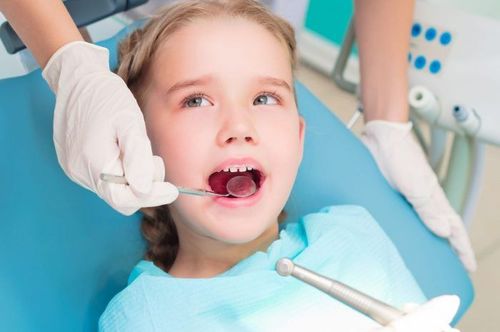
Khám răng định kỳ cho trẻ
Gum diseases can get worse if not treated in time. Early detection of the disease will help you get good treatment, prevent the risk of recurrence as well as affect the teeth, bone structure and other tissues. When acute gingivitis in children becomes serious, parents should take their children to a specialized medical facility for timely diagnosis and treatment, to avoid causing dangerous complications to the child.
For children to be healthy and develop well, it is necessary to have a nutritious diet in terms of quantity and quality balance. If children are not provided with adequate and balanced nutrients, it will lead to diseases of excess or lack of nutrients, which adversely affect the comprehensive development of children in terms of physical, mental and motor skills.
Children who do not eat properly are at risk of micro-mineral deficiency causing anorexia, growth retardation, malabsorption,... If they notice the above signs, parents should supplement their children with products. The supplement contains lysine, essential micro-minerals and vitamins such as zinc, chromium, selenium, and B vitamins to help fully meet the nutritional needs of children. At the same time, these essential vitamins also support digestion, enhance nutrient absorption, help improve anorexia, and help children eat well.
Parents can learn more:
Signs of zinc deficiency in children
Micronutrient deficiency and failure to gain weight in children
Please regularly visit Vinmec.com website and update useful information to take care of your child. Take care of the baby and the whole family.





